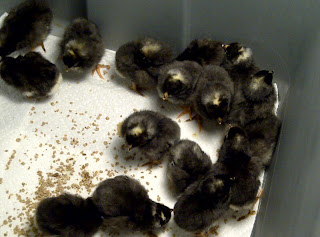During a business meeting in Cyprus many years ago, I noticed a large number of houses on the Island had rebar sticking out of the roof. I could think of no rational reason that could explain this and out of curiosity asked one of the locals. What I was told made perfect sense. Apparently, once you have finished building your house the property tax increases significantly. So, leaving rebar sticking out the top of the house means technically that the house is still under construction and therefore you pay less tax.
In much the same, when I was a sales rep driving around the rural southeast I was struck by how many people constructed out-buildings out of old tin and blue tarp. Why anyone would deliberately make their property resemble a shanty-town was beyond me. Maybe there was some similar hidden advantage known to the practitioners much like the folks in Cyprus with rebar sticking out of the top of their house. This weekend I was initiated into the tin and tarp crowd (although I had the decency to choose more earthy colors).
No, this picture is not from an Occupy Wall Street squat but of the meat rabbit operation constructed (using the term loosely) this weekend on the lean-to at the end of the workshop. Before discussing the merits of the construction technique (or lack of technique), it may be worth discussing why raise rabbits for meat in the first place. Rabbits provide a high quality meat that is low in cholesterol, require little space, are easy to breed (in fact, they breed like rabbits), easy to process (no plucking), easy to feed, make little or no noise (unlike roosters, cows, etc.), no special equipment needed, and their manure can be used directly on the garden without composting. A slam dunk in my opinion.
Rather than use the barn, we decided to start out near the house and use the lean-to at the end of the workshop. Given the four-hole wire cages offer no protection from the elements the lean-to needed covering. Thinking this may be a temporary affair, it offered the perfect opportunity to practice with tin and tarp rather than something more permanent. It was relatively easy to cover the cages with some tin (and the required concrete block) and then cover the lean-to with tarp and 4 mil plastic sheeting. The rabbits seem to be fine. An operation as small as this (3 New Zealand does and 1 Californian buck) could feed a family of four and can be run in even a small backyard where livestock may not be allowed.
The Californian Buck
One of the New Zealand Does
The next picture shows the utility of tarp and something else I thought I would never do. I built a chute under the cages to automatically collect the rabbit droppings into a container. Yes, I am really excited by how much droppings these rabbits produce and how this “poop chute” actually works. One best practice I learned from this experience – build the chute before you put the rabbits in the cages and that way you won’t be working beneath creatures that appear to be able to crap their own body weight daily.
The Poop Chute - Unlike blue tarp, note how the more aesthetically pleasing silver tarp matches the galvanized metal wall and the j-feeder.
Onto the pigs… We finally herded the pigs from their temporary pen on the top field all the way down to the barn. This was a very unpleasant experience for all concerned. First of all, getting a rope on a pig was more difficult than expected. The pigs protested by resisting and squealing all the way down. One of the pigs escaped by standing on the loose end of the rope (my bad) and it was a devil to recapture. They made it relatively no worse for wear and it did not take them long to settle in to their new accommodation. This is much bigger and offers more protection from the elements. Just have to run some hot wires around the paddock and they have all this area to roam in. The paddock also has a livestock loading shoot to make loading the pigs on their final journey a smoother process.
The learning from this experience besides tying a better knot - better planning, particularly with large livestock. If we had planned more effectively we could have placed the pigs in the barn in the first place.
One of the pigs resisting... You'd think she was being led to the butcher's or something.
The Destination
Finally made it! Rabbits are definitely easier to move!



















































